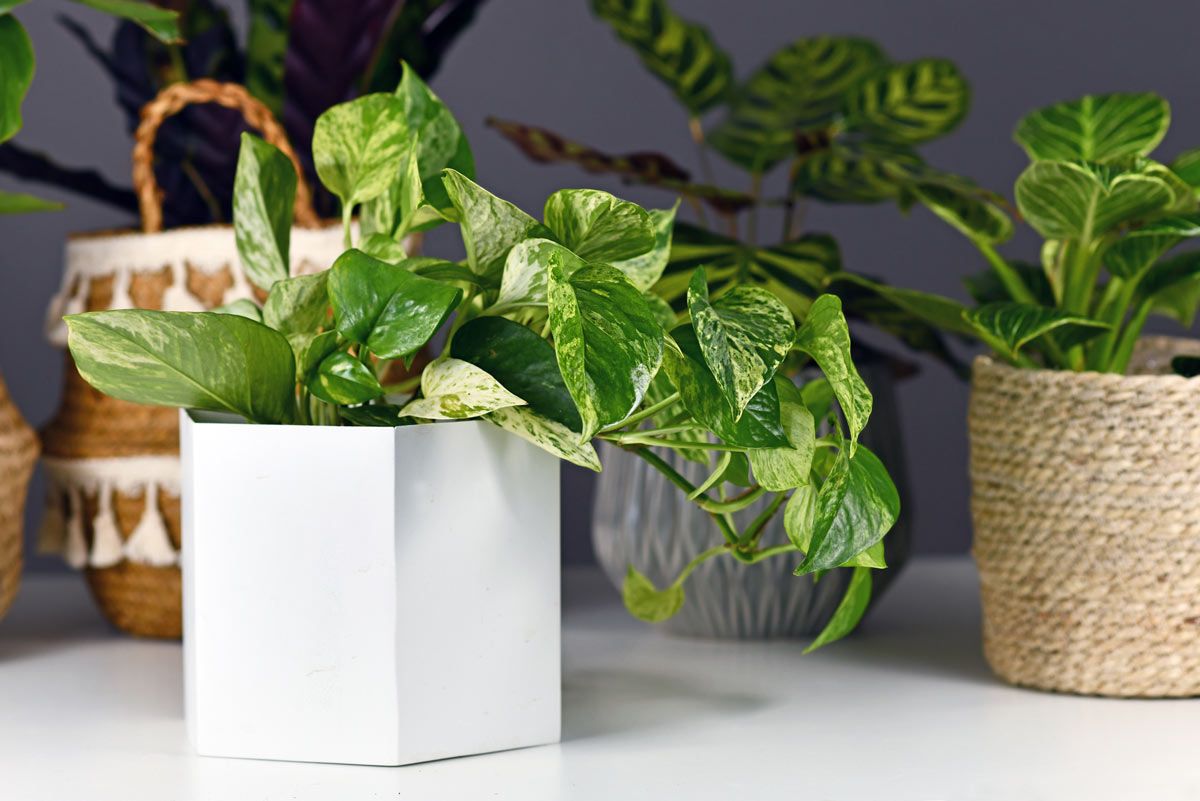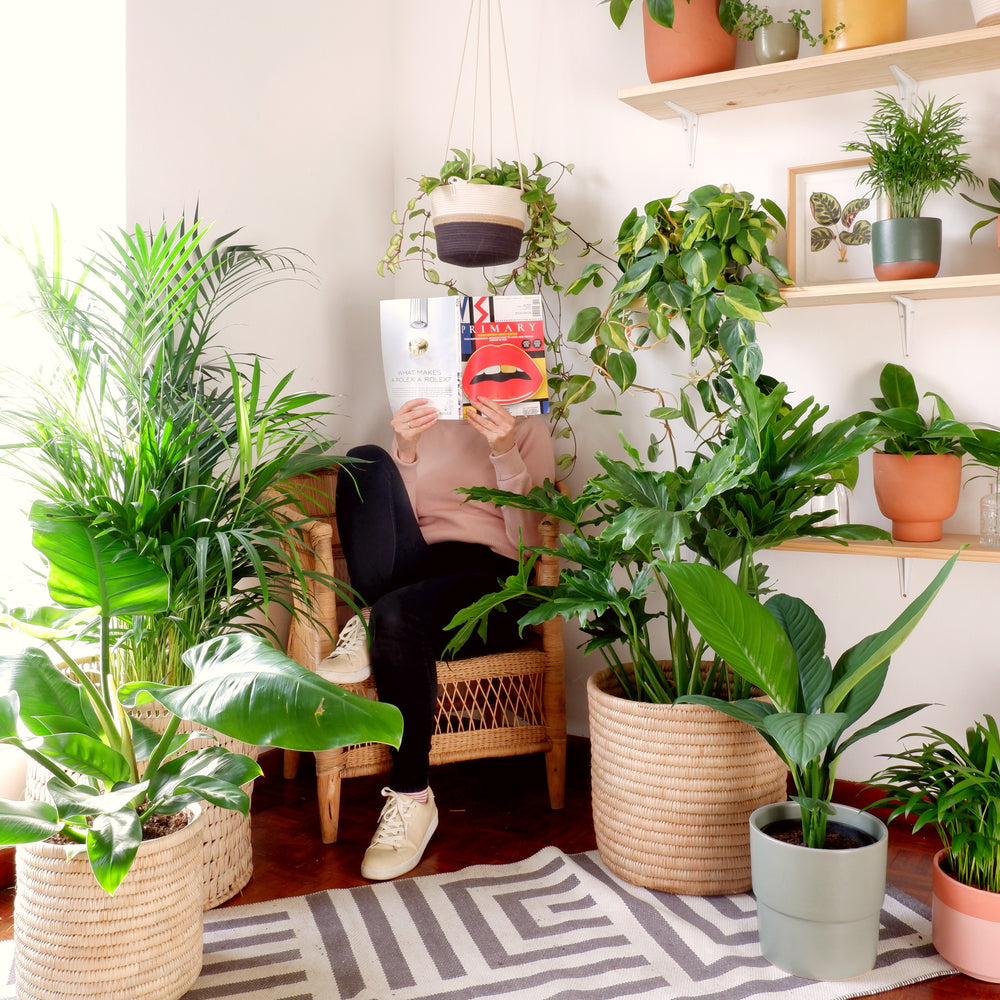Reveal the Keys of Low-Light Indoor Plants and Exactly How They Boost Your Environment
Low-light indoor plants have actually amassed increasing focus for their one-of-a-kind capacity to enhance both visual charm and environmental top quality within workplaces and homes. These durable types, including the Snake Plant and Peace Lily, not only prosper in difficult lighting problems but also play a critical role in air purification and psychological health.
Benefits of Low-Light Indoor Plants
Although lots of people assume that interior plants require abundant sunshine to prosper, low-light interior plants offer a wide variety of benefits that make them suitable for various atmospheres. Among the main benefits is their versatility; they can prosper precede with limited all-natural light, such as workplaces, basements, or spaces with tiny windows. This attribute permits people to improve their surroundings with plant, adding to boosted appearances without the need for comprehensive lighting alterations.
Additionally, low-light interior plants can considerably boost indoor air top quality by filtering dangerous contaminants and releasing oxygen, making living rooms healthier. The existence of plants has actually been linked to better sensations of serenity and emphasis.
Furthermore, low-light plants usually need less maintenance than their sun-loving equivalents, making them excellent for active individuals or those brand-new to gardening. Their durability allows them to grow with marginal intervention, thus offering a fulfilling experience for plant fanatics and novices alike. In recap, low-light indoor plants serve both practical and aesthetic purposes, making them important additions to any type of room.
Top Low-Light Plant Selections
Low-light interior plants can be found in a variety of varieties, each offering unique features and benefits matched for dim atmospheres. Amongst the most popular varieties is the Snake Plant (Sansevieria), understood for its architectural fallen leaves and air-purifying abilities. This resilient plant grows on overlook and can tolerate a vast array of light problems.
Another outstanding choice is the ZZ Plant (Zamioculcas zamiifolia), which includes shiny, dark eco-friendly leaves and is extremely drought-tolerant. Its adaptability makes it a favored for offices and homes with restricted sunshine.
The Pothos (Epipremnum aureum) is additionally a top challenger, with its trailing creeping plants and heart-shaped fallen leaves - Best low-light indoor plants. This flexible plant can be educated to climb or cascade, including visual passion to any kind of space

Care Tips for Low-Light Plants
Looking after low-light interior plants needs a nuanced understanding of their particular requirements to make sure optimal development and vitality. It is essential to pick the appropriate potting mix, as a well-draining soil is essential to prevent origin rot. A blend made for houseplants, often having peat moss and perlite, works well for the majority of low-light varieties.
Watering is another crucial aspect of treatment. Low-light plants normally need less frequent watering contrasted to their sun-loving equivalents. It is recommended to examine the leading inch of dirt; if it really feels dry, it's time to water. Overwatering can bring about difficulties such as mold and mildew and origin degeneration.
Fertilization ought to be approached with caution. During the expanding season, a diluted fluid plant food can be applied monthly, yet in cold weather, lots of low-light plants get in inactivity and call for little to no fertilizing.
Last but not least, it is essential to periodically cleanse the leaves to get rid of dust, permitting far better light absorption. By adhering to these care tips, you can cultivate a flourishing atmosphere for your low-light interior plants, improving both their look and long life.
Enhancing Air Top Quality With Plants
Interior plants play a substantial role in boosting air high quality within homes and office. With the process of photosynthesis, these plants take in co2 and release oxygen, contributing to a much healthier atmosphere. Additionally, specific low-light interior plants have the capacity to filter harmful toxins, such as trichloroethylene, benzene, and formaldehyde, which are commonly located in interior settings.

In addition, the existence of interior plants can enhance moisture degrees, which helps minimize completely dry skin and breathing issues, further enhancing overall well-being. This ability to boost air quality not only promotes physical health and wellness yet also supports mental health.
Including low-light indoor plants right into your living and working areas can cause a more invigorating and vibrant atmosphere (Best low-light indoor plants). Purchasing these natural air purifiers is a straightforward yet efficient approach for improving interior air top quality and fostering a much find more healthier way of life
Producing a Calm Indoor Space
The integration of plants right into living rooms not only enhances air quality however likewise contributes to a tranquil environment. Low-light indoor plants, such as snake plants and pothos, are particularly efficient in developing a serene environment, as they prosper in problems that may or else be inhospitable for various other plant. Their lush vegetation offers a relaxing visual, decreasing anxiety and advertising relaxation.
Including these plants right into your office or home can evoke a feeling of peace and well-being. Strategically putting them in areas where you spend substantial time, such as living rooms or offices, enables an immersive experience with nature, which has actually been revealed to enhance state of mind and cognitive feature.
Moreover, the gentle activity of fallen leaves in reaction to airflow can develop a vibrant aesthetic aspect that enhances the overall ambiance. Take into consideration utilizing a variety of plant heights and textures to add deepness and passion to your area. With thoughtful placement and treatment, low-light indoor plants can change any kind of location into a serene refuge, cultivating not just aesthetic satisfaction yet emotional and likewise psychological wellness.

Verdict
Integrating low-light interior plants into various environments yields considerable benefits, consisting of enhanced air quality and improved aesthetic appeal. These hardy types not only prosper in minimal light but additionally add to a soothing environment, advertising psychological and psychological wellness. By selecting proper varieties and carrying out proper care techniques, individuals can effectively cultivate a peaceful indoor room that cultivates health and efficiency. The transformative power of low-light plants highlights their worth in improving both domestic and occupational setups.
Although several individuals assume that indoor plants call for plentiful sunlight to grow, low-light indoor plants offer a multitude of advantages that make them suitable for different environments.In addition, low-light interior plants can substantially boost indoor air top quality by filtering unsafe contaminants and launching oxygen, making living rooms healthier. In addition, certain low-light interior plants have the ability to filter damaging pollutants, such as trichloroethylene, formaldehyde, and benzene, which are frequently located in interior settings.
Low-light interior plants, such as snake plants and pothos, are especially effective in producing over here a peaceful environment, as they thrive in problems that may otherwise be inhospitable for other greenery.Integrating you can try these out low-light interior plants right into different environments yields substantial benefits, including enhanced air top quality and improved aesthetic charm.